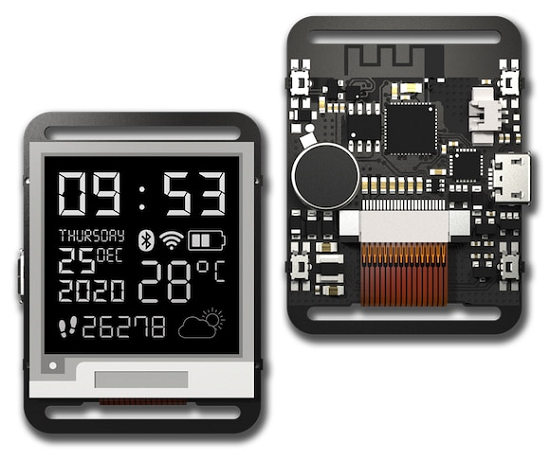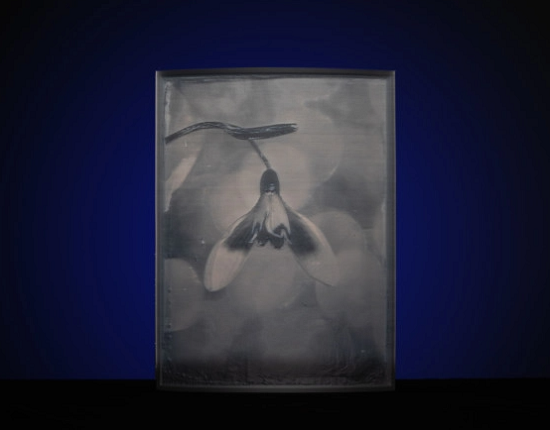We’re talking business, a 3D printer installation, and some interesting 3D printed products in today’s News Briefs. Ultimaker has appointed a new Chief Technology Officer and Senior Vice President, while automotive design and engineering firm CALLUM has installed a MakerBot METHOD X 3D printer. Moving on, a 3D printed open source smartwatch could replace the popular Pebble. Finally, a photographer has figured out how to 3D print his photographs.
Ultimaker Appointed CTO and SVP of Printers & Peripherals
Professional 3D printing company Ultimaker announced that it has appointed Miguel Calvo as its Chief Technology Officer and Senior Vice President Printers & Peripherals, effective February 1st, 2021. Calvo has held several R&D leadership positions in high-tech industries, such as clean power generation and aerospace, throughout his career, and was previously the Development Director at Linx Printing Technologies, where he led the charge in developing the company’s compact industrial Continuous Inkjet Printer. At Ultimaker, he will collaborate with the company’s industry partners to see that its 3D printing platform is properly integrated into existing workflows, and will also be in charge of R&D efforts for Ultimaker’s 3D printer and peripherals portfolio.
“In my previous roles, I have witnessed first-hand the incredible impact that Ultimaker’s 3D printers and software have on accelerating product development and increasing productivity and flexibility in both an R&D and manufacturing environment,” Calvo said. “I look forward to working with the talented team and Ultimaker’s partners as I am truly impressed by how they continue to provide an easy to use, flexible and open 3D printing platform that enables sustainable manufacturing. I cannot wait to help the business outgrow the flourishing 3D printing market.”
CALLUM Installs MakerBot METHOD X 3D Printer
Automotive and lifestyle product design and engineering firm CALLUM has installed MakerBot’s METHOD X 3D printer, and plans to use it for 3D printing tooling, production parts, and functional prototypes for several of its luxury lifestyle and vehicle brands, including R-Reforged’s limited edition Aston Martin CALLUM Vanquish 25. The UK firm works to design bespoke and limited-edition products that offer real-world functionality and cutting-edge design, which is why it uses both traditional craftsmanship and more current, advanced technologies, such as additive manufacturing. The reimagined Aston Martin will have more than 350 design, engineering, and material changes, and only 25 will be built, featuring multiple end-use parts, like brake ducts, that will be 3D printed on the METHOD X. The printer’s advanced industrial-grade materials, dissolvable SR-30 support material, and enclosed heated chamber will all help create parts for the Aston Martin with precision, excellent surface finish, and dimensional accuracy.
“The CALLUM engineering team has craved more additive manufacturing capabilities as the first projects enter production and METHOD X will be swiftly enrolled to support this. Having put the 3D printer through its paces, the level of part accuracy and the diversity of engineering-grade materials available is second to none versus other industrial desktop printers we’ve tested. Not only does this technology enable us to enhance our prototyping capabilities for true functional testing, but we can now also optimize the production of tools and end-use parts where 3D printing previously fell short in terms of strength, surface finish and dimensional accuracy,” said Adam Donfrancesco, CALLUM’s Technical Director.
“Having direct access to industrial-grade 3D printing capability will significantly reduce both the time and cost of our design and production process. Until now, our engineers have had to rely on our basic in-house capability alongside outsourcing, a process which can take several weeks. METHOD X completely changes the game, enabling the team to print parts on demand in a matter of hours. This will not only eliminate the need for external vendors, resulting in considerable cost savings, but it will also help to accelerate production times for our vehicles by allowing us to reiterate design ideas very rapidly and take more design risks with fewer consequences.”
3D Printed Replacement for Pebble Smartwatch?
In 2012, everyone who was anyone wanted a smartwatch from California wearables company Pebble, which raised millions in two Kickstarter campaigns for its E-Paper and Pebble Time smartwatches. The company offered customers a way to customize their own Pebble watches with 3D printing, and it seemed like a good business model for a while, but Fitbit took it over in 2016, and Pebble servers stopped offering support in 2018. Now, a group of art and technology enthusiasts called Squarofumi has come out with an alternative for the Pebble: the 3D printed Watchy Arduino. The E-Paper smartwatch, powered by an ESP32 chip, features a minimalist but functional design, with open source hardware and software for hackable customization options. There’s no heart rate monitor, water resistance, or blacklight to see the watch face in the dark, but Watchy does have WiFi and Bluetooth connectivity, a built-in USB Serial Adapter, a vibration motor for notifications and a 3-Axis Accelerometer to detect gestures, a 200 x 200 pixel e-paper display, four programmable tactile buttons, and more. As long as you know how to code, you can program the Watchy however you want.
“In the box you get a fully assembled watch PCB. There’s also the e-paper display, a 200mAh battery, a watch strap and adhesive tape. Putting the whole thing together should not be too arduous. Detailed instructions are available on-line, along with, source code, design files and more,” Marko Maslakovic wrote on Gadgets & Wearables.
“All in all this seems like a decent little offering for DIY fans and those that like open source hardware and software. The simple, no-nonsense design might appeal to Pebble fans. Think of it as a less premium looking version of the Pebble watches.”
You can order the timepiece on Tindie for less than $50, though it’s currently out of stock.
Photographer Translates Wet Plate Photos into 3D Prints
Austrian photographer and artist Markus Hofstätter was 3D printing parts for his cameras when he decided to pivot and try 3D printing his photographs instead. He found a way to translate his wet plate photos into 3D printed pieces of art, which he calls “touchable bokeh,” a Japanese word to describe the aesthetic quality of the blur you see in an image’s out-of-focus parts. In order to get the desired level of detail, it takes him about 17 hours to very slowly print each piece, which looks like a lithophane. Each dark part of an image is printed thicker, while the light parts are printed thinner, and when you hold the piece up to the light, you can see the photograph appear. Hofstätter says he can feel the edges and subject of his 3D printed photographs, along with the bokeh. He was inspired to create 3D printed photographs because the technology shares a few similarities with the wet plate collodion process.
“The wet plate collodion process is kind of, maybe, 3D printing,” Hofstätter said. “You know, the light and the developer manifests the silver on the plate in layers, and afterward, the silver that is not exposed to light is washed away with a fixer. So if you have ever seen a resin printer working, it’s similar.”
While we don’t know the exact process Hofstätter uses to create his prints, it’s safe to say they’re pretty impressive. You can purchase one of his touchable bokehs on his eBay store.
Subscribe to Our Email Newsletter
Stay up-to-date on all the latest news from the 3D printing industry and receive information and offers from third party vendors.
You May Also Like
Polls of the Week: Are 3D Printed Guns a Threat and Should We Regulate Them?
One of the most controversial topics in the 3D printing industry, hands-down, is guns. It’s been a major point of contention for years, and people typically have very strong opinions...
3D Printing News Briefs, April 3, 2024: Kickstarter FDM 3D Printer, Artificial Eyes, & More
In 3D Printing News Briefs today, we’re talking about an FDM 3D printer on Kickstarter, advancements in artificial eye creation, and 3D printed solenoids for electromagnets. Then we’ll move on...
Daring AM: The Global Crackdown on 3D Printed Firearms Continues
In the last few years, a surge in police raids uncovering 3D printed guns has led to concerns about their growing association with criminal gangs. Although typically seen as inferior...
Daring AM: Canada Tackles Increase of 3D Printed Gun Arrests and Sentences
Recent incidents in Canada have brought to light the arrest of individuals for possessing illegal 3D printed firearms, among other charges. These incidents, which resulted in multiple arrests, serve as...

































